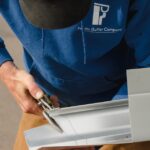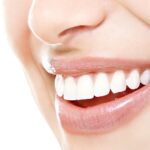The workplace is a sensitive environment, and employers are tasked with keeping it safe. Company owners and managers have to take measures to ensure that their customers, employees, suppliers, and contractors are protected from harm in the workplace. In addition to ensuring proper lighting, providing safety wear, and more, employers achieve this by performing drug tests through a Robbinsdale drug testing facility. These tests are administered to prospective employees looking to join the company and those already on the payroll to ensure they are not performing their duties under the influence of drugs. Here is an overview of the most common drug tests administered and how they work.
Hair Tests
Most experts consider hair drug tests the best check for repeat drug use. This is because this test can detect drug use for up to 90 days, giving it one of the widest detection windows of all drug tests. Due to this, hair tests make it impossible for people to cheat since abstaining for a few days before the test does not alter the results. Hair tests can also reveal when the test subject used a drug, how long they used it, and when they stopped – all through a small hair sample.
Urine Tests
Urine drug tests are the most common type of drug test administered in the United States. They are usually conducted during employment screening, following an employee accident, or randomly. At the moment, urine tests are approved for federally-mandated testing – the only form of testing with such clearance. They are also the least invasive and are used to check for drugs like opiates, PCP, methamphetamines and amphetamines, cocaine, and marijuana.
Saliva Tests
The saliva test is also called the mouth swab drug test or oral fluid test. A lab technician uses a cue tip to swab the inside of your mouth and collect a sample, which is then tested for common drugs. Among employers, saliva tests are very popular because they are affordable, easy to administer, quick, and efficient. Their efficiency is because saliva can retain drug traces hours after the drug has metabolized and passed into the urine. In fact, saliva tests can detect drug use up to 48 hours after use.
Blood Tests
In the event of an emergency, drug test specialists may resort to a blood drug test. Blood drug tests are invasive and usually avoided unless completely necessary. They are, however, preferred to breathe tests when determining alcohol levels because their results are more precise. Typically, a technician draws a small sample of your blood using a syringe and tests it in a lab.
Breath Tests
When the goal is to check alcohol levels, breath tests may be performed instead of blood tests. These tests determine the level of intoxication or impairment at the time of the test – not later or previously. They are the most common type of alcohol test in the workplace due to their ease of use and convenience. Essentially, you blow into a breathalyzer, which shows a breath alcohol concentration (BrAC) level that the reader can then use to determine the level of intoxication.
Get Tested at a Trusted Facility
Many employers require a drug test before hiring a prospective employee. Whether you have been asked to take one or are in the process of recruiting new workers, getting a drug test should not scare you. Now that you know what to expect, you can find a reliable facility that provides in-house drug testing to get started. Make sure the lab is certified and on-site for expedited results.











